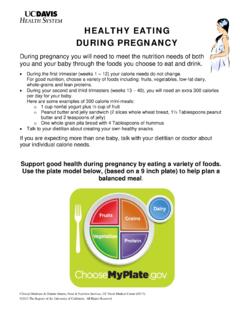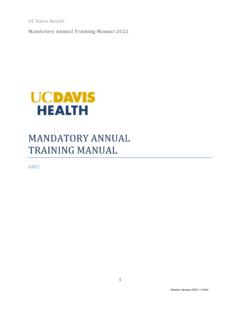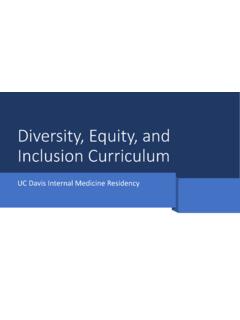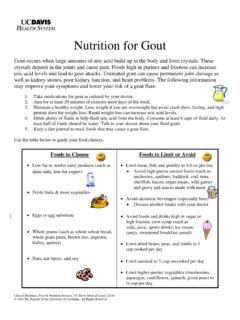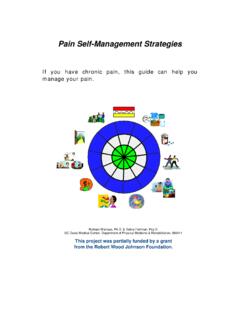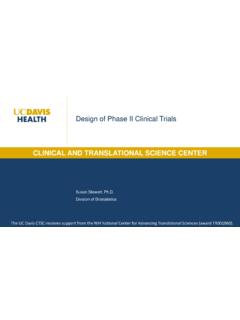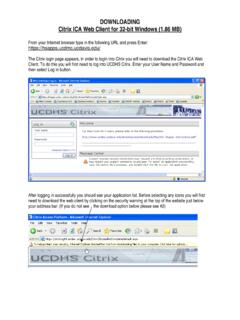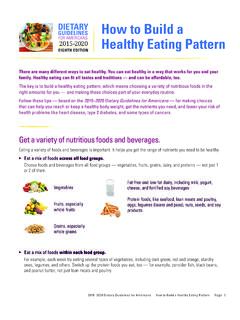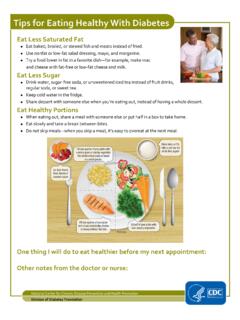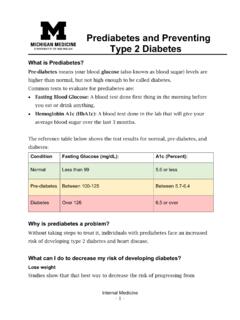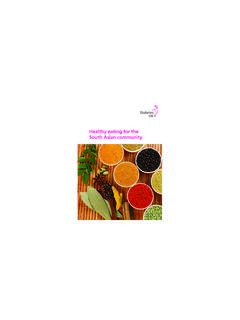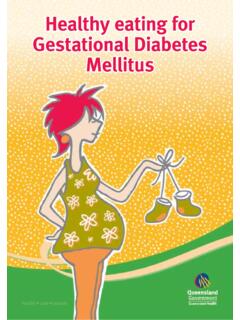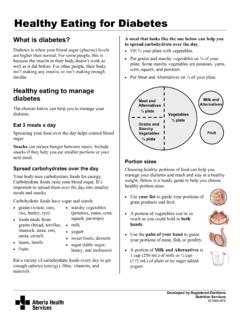Transcription of Healthy Eating for Pre-Diabetes - UC Davis Health
1 Healthy Eating for Pre-Diabetes Pre-Diabetes occurs when your blood sugars are higher than normal, but not high enough to be called diabetes . If you have Pre-Diabetes , your body does not use insulin well which leads to high blood sugar. Long-term high blood sugar can cause damage to your eyes, kidneys, nerves, heart, and blood vessels. Making changes to your diet and lifestyle may prevent these complications and a diagnosis of diabetes . What Can You Do? 1. Know your numbers. Fasting Glucose A1c (percent). (mg/dL). Normal Less than 99 Less than Prediabetes 100-125 diabetes Greater than 126 Greater than 2.
2 Aim for a Healthy weight. If you are overweight, losing 5 10% of your weight through Healthy Eating and exercise can help your insulin work better and lower your blood sugar. Your weight loss goal is: _____. 3. Be more active. Exercise at least 30 minutes a day, 5 days a week, to help your body use insulin better. Make it fun by doing a mix of different exercises like jogging, biking, stretching, hiking, lifting weights, or dancing. 4. Eat a Healthy diet. Carbohydrates (carbs) found in certain foods will raise your blood sugar. Carbs should be part of a balanced meal which also includes proteins, nonstarchy vegetables, and Healthy fats.
3 Eating the right amount of carbs with each meal can help control blood sugar. The foods shown below have carbs in them. Your dietitian can tell you how many carbs to eat per meal. High Carb Foods Grains & Fruit Milk Sweets Starchy Vegetables Such as pasta, bread, Fresh, canned, frozen, or Fat-free or 1% milk, Such as soda, jelly, syrup, rice, peas, corn, potatoes dried fruit, fruit juice yogurt, soymilk cake, candy, ice cream, pastries Clinical Dietitians, Food & Nutrition Services, UC Davis Medical Center (5/14). 2014 The Regents of the University of California.
4 All Rights Reserved. Healthy Eating tips: Limit portion sizes of carbs. Eat at least 3 meals of similar size each day. Eat balanced meals and include foods from all the food groups every day. Choose foods that are high in fiber. o Examples: whole-grain bread and pasta, brown rice, oatmeal, bran cereal, fresh fruits and vegetables, beans, nuts, seeds Limit sweets. Eat less fat. Limit your alcohol intake. How to Portion Your Plate Check List for Your Meal: 1 serving starch 1 serving nonfat or 1% milk 1 serving lean protein 1 serving fruit Nonstarchy vegetables Resources American diabetes Association: USDA : The Calorie King Pocket Calorie, Fat and Carbohydrate Counter.
5 Allan Borushek, ISBN 1930448139 or Clinical Dietitians, Food & Nutrition Services, UC Davis Medical Center (5/14). 2014 The Regents of the University of California. All Rights Reserved.
